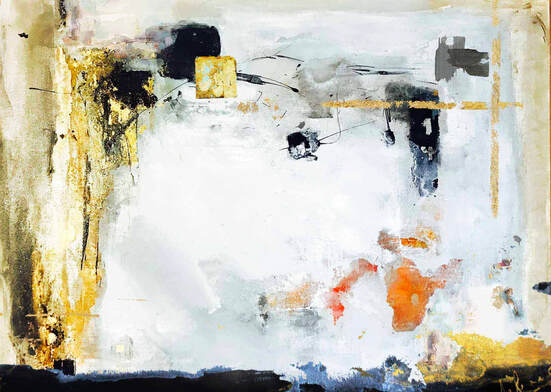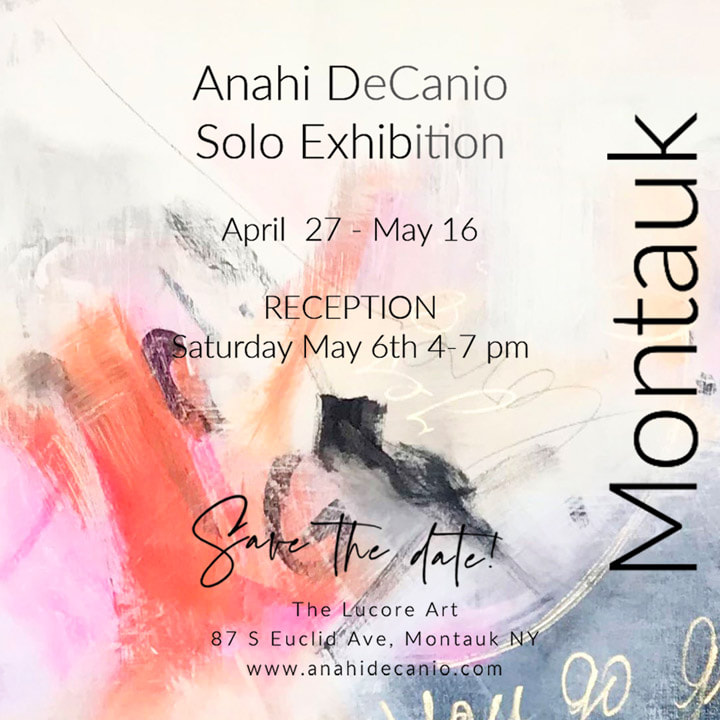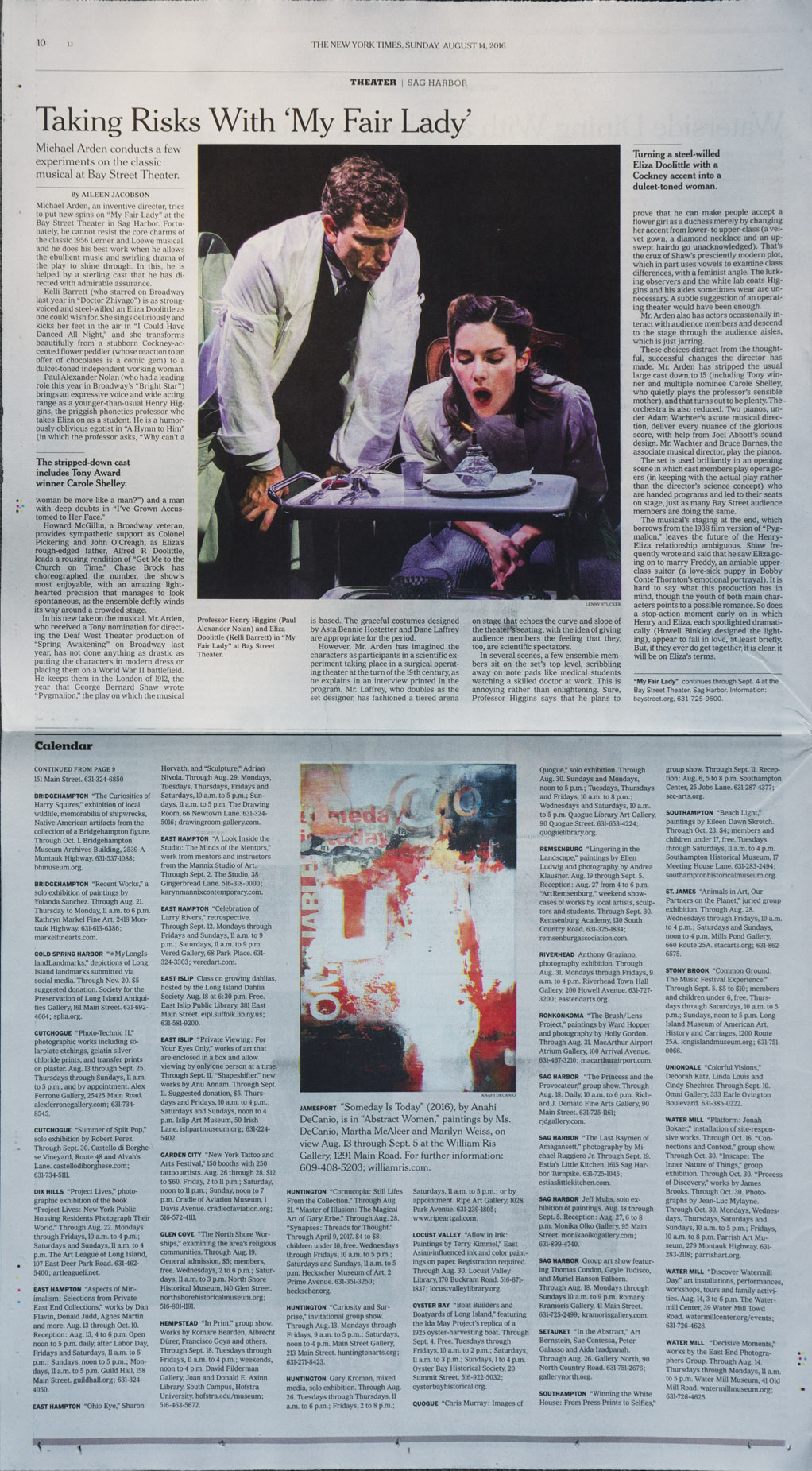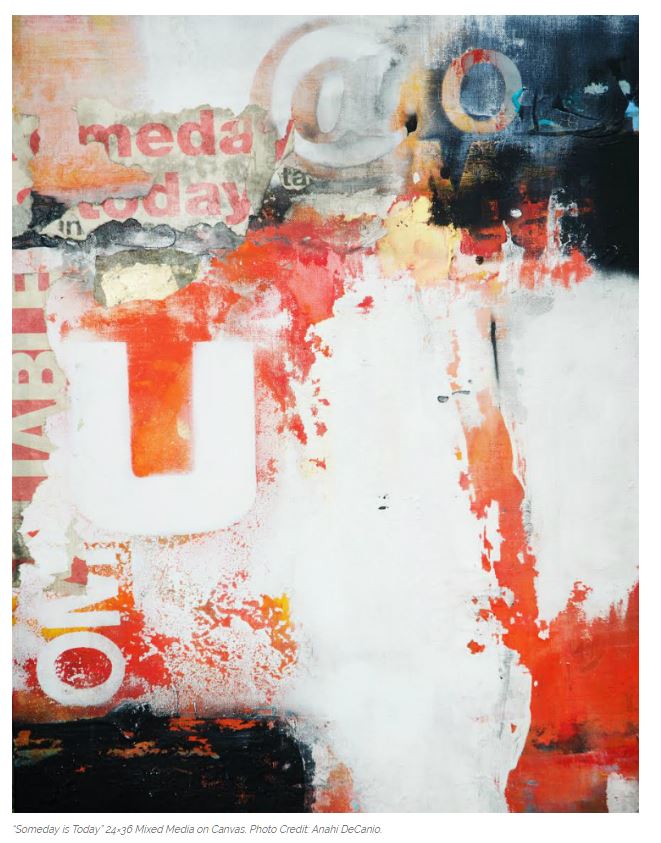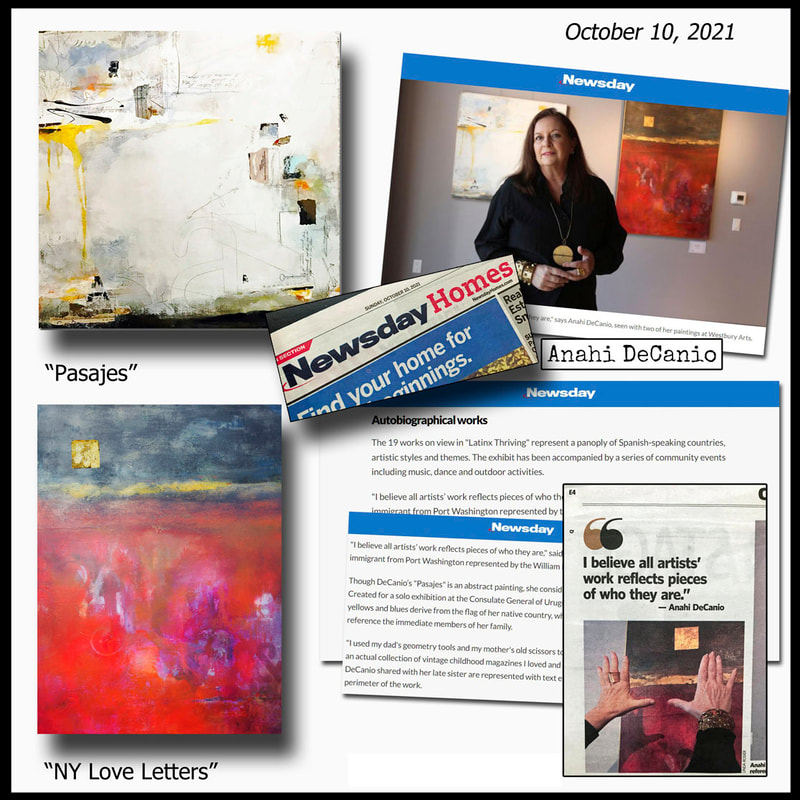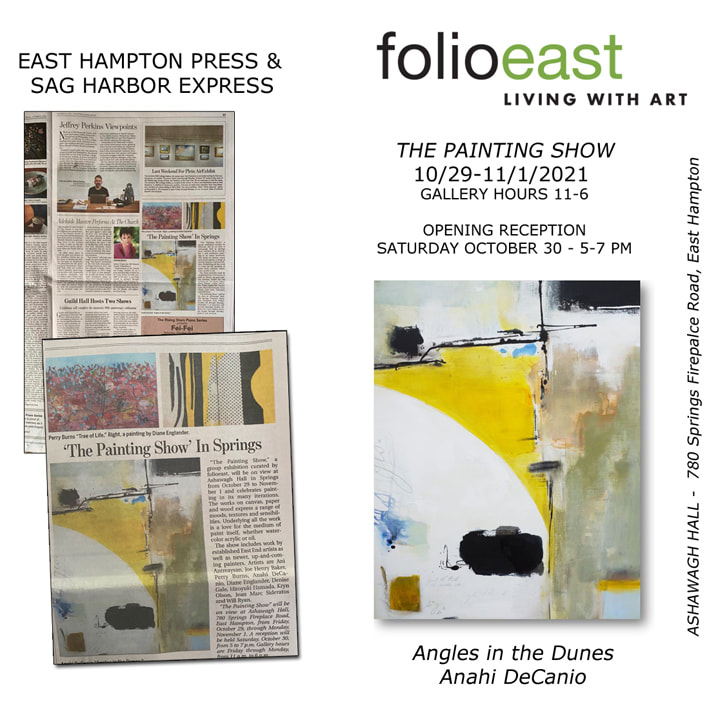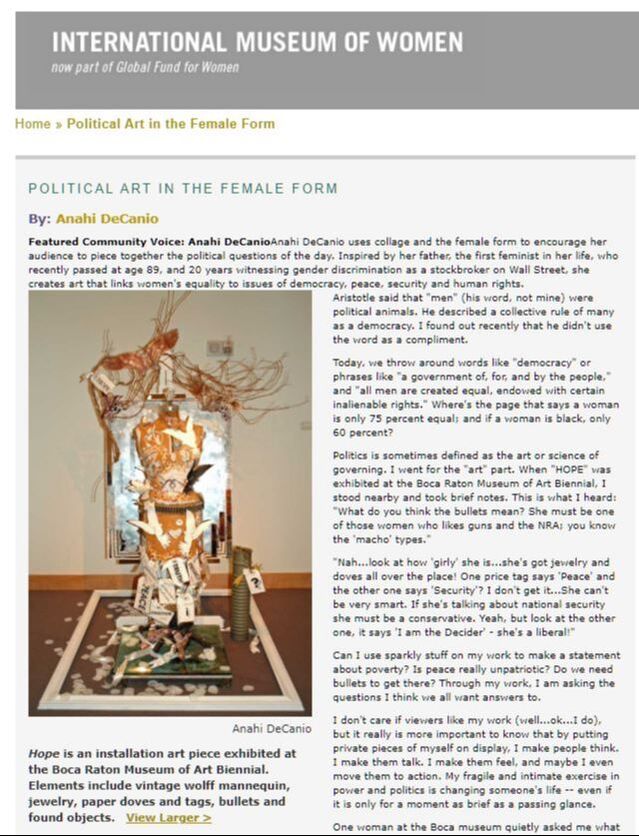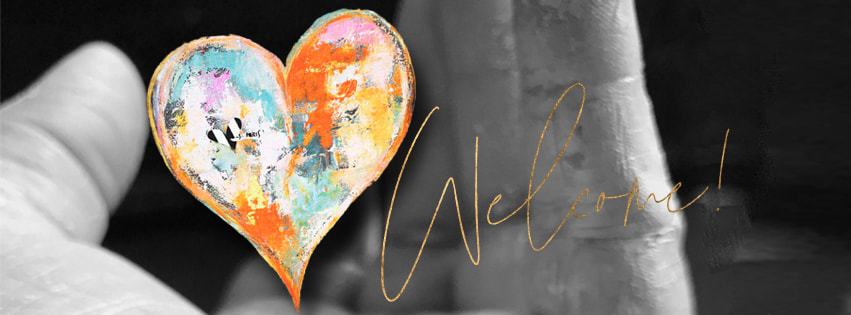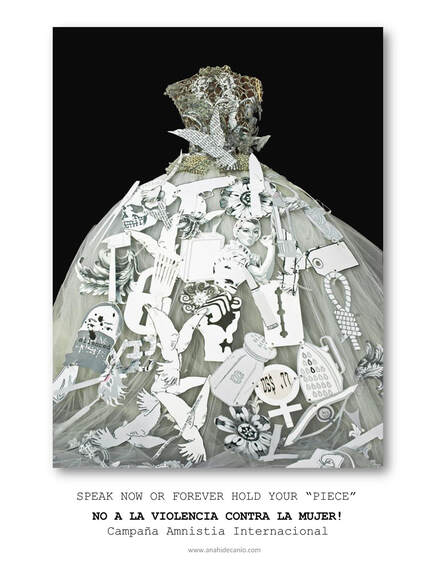 Anahi DeCanio art installation for Stop Violence Against Women Campaign - "Speak Now or Forever Hold Your Piece" Anahi DeCanio art installation for Stop Violence Against Women Campaign - "Speak Now or Forever Hold Your Piece" Sigh… OVERHEARD… “I see a face looking left…I get a sense of a booming tree there…is this a picture of the world? What did you mean to paint? What does it mean? “ ME: None of the Above. I have upset several curators over the years. When artists prepare for an exhibition, whether a solo show or a group exhibit, there are some usual steps to follow. Some steps are rather obvious starting with the creation or gathering of the appropriate paintings that fit the vision of the curator for a given show. Artists also need to supply their bio, artist statement or curriculum vitae (CV), past exhibition venues, list of public collectors, awards, etc. The press usually wants to know where was I born, where do I live…how old I am… and other details that I feel have no real relation to the work. I confess I don’t enjoy answering these questions although I have. These are reasonable requests that form part of what artists do behind the scenes. I do my part and cooperate but often reluctantly or cautiously to not “paint” the artwork in the reader’s mind before they can see it for themselves. Whether we like to admit or not, we all have preconceived notions and interpret the world on that basis. We attach meaning to external factors about the artist that may have nothing to do with the actual art. The artist's story is relevant and important to help form a relationship with the art, but I sometimes wonder if that changes the way we experience the art. Case in point. I created a collection comprised of figurative work and installations that was featured as part of Amnesty’s International “Stop Violence Against Women” campaign. “Speak Now or Forever Hold Your Piece” which focused on “honor” killings was exhibited widely at venues that included The Steinbeck Center & Museum, The Palm Beach Armory and Brown University, among others. Many of those exhibits were described as feminist art. Is it feminist because I’m a woman artist? Because the installation depicted a woman? Women’s issues? Can you be a feminist artist if you’re not a woman? Are you a feminist artist if you only paint abstracts? Although the written word can serve to communicate aspects of artwork that might be otherwise missed, do artist statements and reviews limit art’s journey to the confines of those explanations? More often that not, I prefer to let the visual experience speak for itself. As an abstract artist, I find it challenging to explain my work. The how is easy enough, the why and the what, not so much. It’s not my intent to be obstreperous or to fuel an inauthentic aura of mystique around the artwork (although some artists do that quite successfully!). It’s simply that, I just mostly can’t. There are occasions when I have sketched out a painting, ideas, a theme, a thought or belief I want to portray. This is particularly true of my figurative work but my abstracts are…well…abstracts. To be clear, I love to hear the comments about what people see in my work. I often learn things about my paintings that I had not been aware of before until they were viewed through someone else’s eyes. But the truth is, I am nourished when people tell me they love the way my painting makes them feel. When working on commissions and custom work, I ask a lot of questions. Yes, color palette, use of white space, size, etc. are very important. But I ask a lot of questions about what the collector wants from the artwork. Is it for their office? Do they want energy and vibrancy from it? If for a living space, Is it for a bedroom? What mood do they want? When a painting finally speaks to me to let me know it’s done, without fail, I sit back and wonder how it got there. There are some elements that are intentional. I will often use “windows” to a brighter magical place we all need to escape to from time to time. My text is sometimes intentional but must admit I often need to read it back when I’m done because I don’t recall what was written. For the most part, it’s a stream of consciousness that takes over without premeditated thought. I recognize this has been a topic of discussion in the abstract world and sometimes controversial, but I can’t explain it any other way. If I stop working on a painting for whatever reason, I must wait until that painting “comes back to me” so it can be finished. Just like children, the paintings are of me and through me but not really mine. There are more questions than answers. I often wonder about the usually eloquent and elaborate intellectual explanations of abstract art. Are abstractions meant to be explained? Interpreted? Analyzed? Doesn’t that defeat the purpose? Are they supposed to represent an artist’s state of mind or intention? Are the paintings meant to be experienced through the art critic’s lenses? I am a visual being. I don’t see things in abstractions, I see abstractions in things. I can try to communicate a state of being for a collection but not individual paintings. It’s not about what I intended, it’s not about what I may see (mostly not see) – It’s about the viewer’s experience to what’s on the canvas. If I must acquiesce and give it a label or an intention, whatever your reaction is, good, bad or indifferent, that is what was intended. Anahi DeCanio
0 Comments
|
Archives
September 2023
|
|
